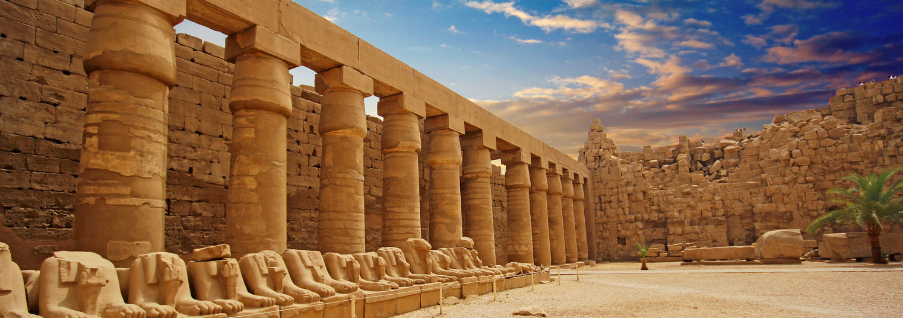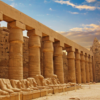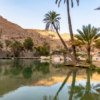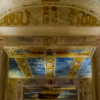Nestled along the banks of the Nile River, Luxor is a city that transports you back in time. Known as the “world’s greatest open-air museum,” Luxor is home to some of the most extraordinary monuments of ancient Egypt. From towering temples to intricate tombs, the city is a treasure trove of history and culture. Whether you’re a history enthusiast, an adventure seeker, or a curious traveler, Luxor promises a journey through the annals of time.
Arrival in Luxor
Your adventure begins as you arrive in Luxor, greeted by the golden hues of the desert and the glistening waters of the Nile. Many travelers choose to start their exploration from the East Bank of Luxor, where the modern city thrives alongside its ancient heritage. The city offers a range of accommodations, from luxurious resorts overlooking the Nile to charming guesthouses that reflect traditional Egyptian hospitality.
The East Bank: A Gateway to History
Karnak Temple Complex

The Karnak Temple Complex is a sprawling testament to ancient Egyptian ingenuity and devotion. Dedicated primarily to Amun-Ra, this site is a maze of colossal columns, towering obelisks, and intricately carved walls. The Great Hypostyle Hall, with its 134 massive columns, leaves visitors in awe of its scale and artistry. Don’t miss the Sacred Lake and the sound and light show that brings the history of Karnak to life after sunset.
Luxor Temple

Just a short distance from Karnak lies the Luxor Temple, a majestic structure that dates back to the reign of Amenhotep III. Unlike other temples dedicated to gods, Luxor Temple was a place of royal ceremonies. Its Avenue of Sphinxes, a two-mile pathway lined with sphinx statues, once connected it to Karnak. The temple’s illuminated facade at night is a sight to behold, casting an ethereal glow on the city’s skyline.
The West Bank: A Journey to the Afterlife
Crossing the Nile to the West Bank unveils a different side of Luxor, one that delves into the realm of the afterlife. This area is home to the Valley of the Kings, Valley of the Queens, and the mortuary temples of ancient pharaohs.
Valley of the Kings

The Valley of the Kings is a burial ground fit for royalty. This UNESCO World Heritage site houses over 60 tombs, including that of the famous boy king, Tutankhamun. Each tomb is a masterpiece of art and engineering, adorned with vivid paintings and inscriptions that narrate the journey to the afterlife. Be sure to visit the tomb of Seti I, renowned for its stunning wall art.
Valley of the Queens

Nearby, the Valley of the Queens is the resting place of queens and royal children. The tomb of Nefertari, the favorite wife of Ramses II, is a highlight here. Its vibrant frescoes, depicting Nefertari’s journey through the underworld, are considered some of the finest in Egypt.
Temple of Hatshepsut

The Mortuary Temple of Hatshepsut, nestled against the cliffs of Deir el-Bahari, is a marvel of ancient architecture. Dedicated to Egypt’s first female pharaoh, this temple is a blend of grandeur and elegance. Its terraces, colonnades, and intricate reliefs tell the story of a powerful queen who defied conventions.
Experiencing the Nile

No trip to Luxor is complete without experiencing the Nile River. Whether it’s a traditional felucca ride at sunset or a multi-day cruise that takes you to nearby cities like Aswan, the Nile offers a serene escape. Onboard, you can enjoy traditional Egyptian cuisine, music, and dance as the riverbanks reveal scenes of rural life and ancient ruins.
Luxor’s Vibrant Culture

Beyond its ancient wonders, Luxor brims with culture and tradition. The bustling markets, like the Luxor Souq, offer a sensory feast of sights, sounds, and smells. Here, you can shop for spices, handmade crafts, and souvenirs while haggling with friendly vendors. Don’t forget to sample local delicacies like koshari, ful medames, and freshly baked baladi bread.
Practical Tips for Visiting Luxor
- Best Time to Visit: The ideal time to explore Luxor is during the cooler months, from October to April. The temperatures are more comfortable for sightseeing.
- Guided Tours: Hiring a knowledgeable guide can enrich your experience by unraveling the stories behind the monuments.
- Comfortable Clothing: Light, breathable fabrics and comfortable shoes are essential for exploring the sites.
- Hydration: Carry plenty of water and sunscreen, as the desert sun can be intense.
Conclusion
Luxor is more than just a destination; it’s an immersive journey through history and culture. Every corner of the city whispers tales of ancient civilizations, leaving visitors spellbound. Whether you’re marveling at the grandeur of Karnak, uncovering the mysteries of royal tombs, or cruising along the timeless Nile, Luxor offers an unforgettable adventure. So pack your bags and step into the pages of history—Luxor awaits.








